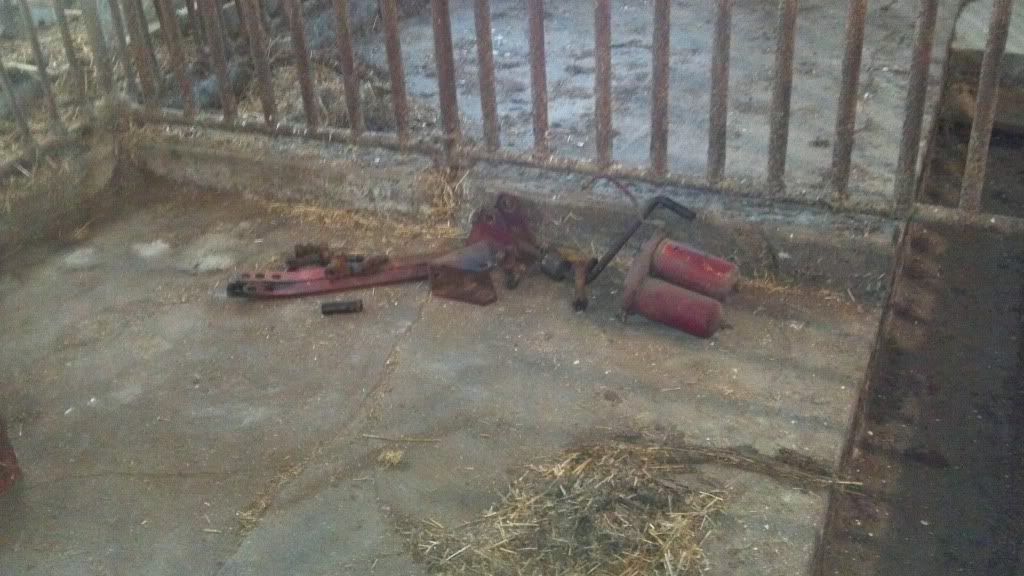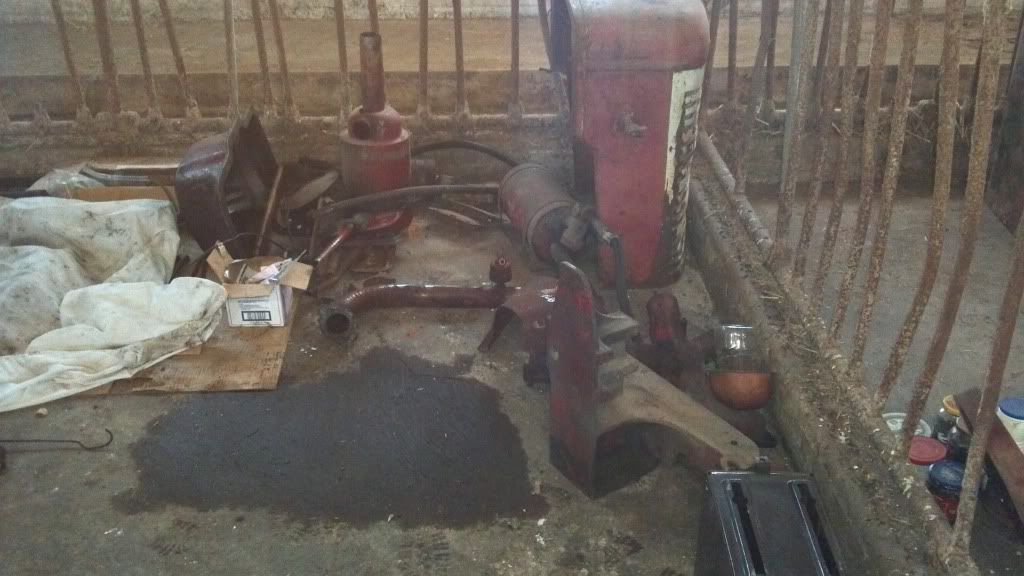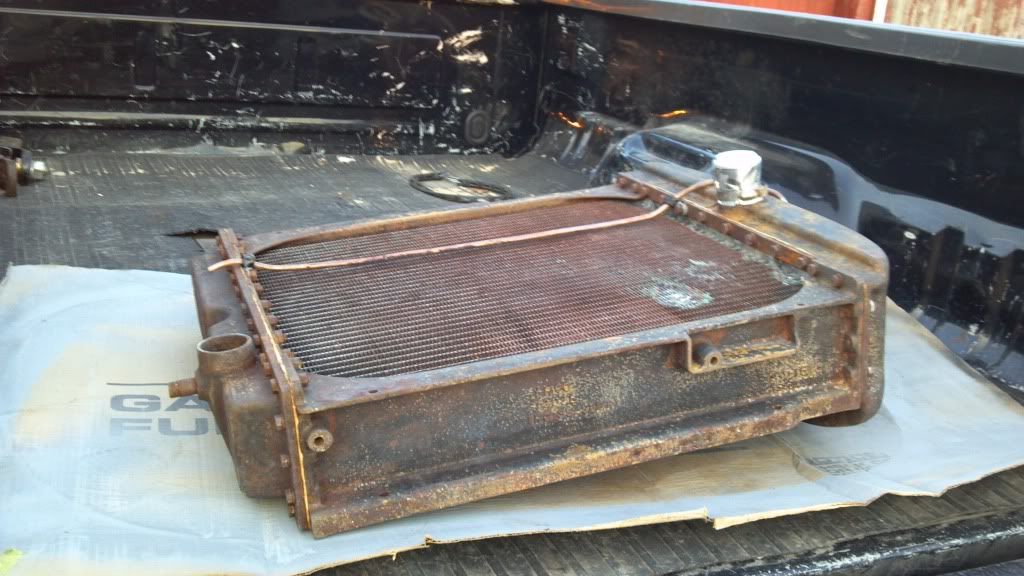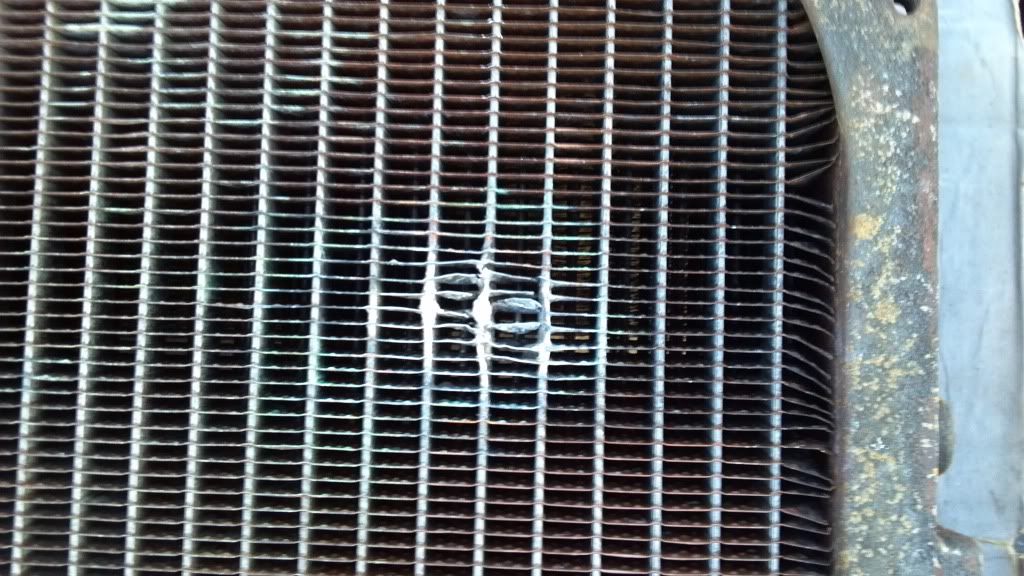Mark Basinger
New User
I want to prep and paint my Ford 600 myself. I have read many posts here but am still a bit unclear. I want to apply the best paint possible with minimal health risks. I do not have supplied air system. What should I use?
(quoted from post at 06:38:53 07/04/12) Showcrop, my point is that Picklex 20 will do everything that you say. You can brush it on and forget about it until you are ready to paint, then scuff it with a scothbrite pad and remove most of the rest of the white residue with wax and grease remover. The instructions say it can be painted over, but I don't paint over residue, which is one reason I don't use true rust converters. Picklex is expensive but it goes a LONG way. I was told about it 10 years ago by a long term painter, who told me to forget metal prep, which is about the same as what you are using. I used Picklex over a sanded and mostly clean hood also 10 years ago. There was some residual rust I could not sand out, before I started using the fiber wheel. The rust was neutralized. I have never seen rust bubble on anything because there is no rust when I paint. Pro body guys (I will exclude B Maniac and Glennster, because they know what they are talking about) are for the most part "shortcut guys" who want to get done and make money off someone else. I can prepare surfaces better than they do because I take the time to do it right. Don't take me wrong, there is nothing wrong with what you are doing, it just takes more time, and you have to be sure the surface is absolutely dry, with Picklex you don't have to do that. It appears that I am going to tell people what I do, you are going to say what you do, so on this forum that "conflict" is always going to be here -- so be it. Done properly they both work.
(quoted from post at 21:10:42 07/07/12) CNKS, Not stiring the proverbial pot here but just adding my input. I have been sandblasting or having pro blasters do the job on some large scale projects for MANY years and I must be just plain lucky, if I take your sage advice to heart. RE: "Sand blasting sheet metal will warp it" I agree, sandblasting is not the operation to be taken on by the novice without some education and guidence. Hope I haven"t upset anyone, just adding my point of view.
(quoted from post at 08:08:47 07/08/12) I was surprised when I warped mine. This was the hood off a 460, it flattened the lengthwise crease in the center of the hood, the rest was ok. I hope the guy or you that does your WD9 disassembles more than Colby64 did his 560. He didn't even remove the distributer or the oil cansiter, or the seat, or the steering column, etc. Anyplace there is a part left on, the rear of the part and the cast, etc behind it does not get proper coverage. Hard to do with a diesel like yours unless you remove the injection pump and all the tubes, which you or him probably does not want to do. Colby's gas tractor has a lot of unpainted parts, regardless of how good it looks. I have nothing else to do, so mine get 100% stripped -- but I don't have a diesel.



(quoted from post at 06:10:25 07/09/12) I usually leave my radiator cores unpainted, but yours looks like it could use some help. Painting probably ok as long as you keep it light.

We sell tractor parts! We have the parts you need to repair your tractor - the right parts. Our low prices and years of research make us your best choice when you need parts. Shop Online Today.
Copyright © 1997-2024 Yesterday's Tractor Co.
All Rights Reserved. Reproduction of any part of this website, including design and content, without written permission is strictly prohibited. Trade Marks and Trade Names contained and used in this Website are those of others, and are used in this Website in a descriptive sense to refer to the products of others. Use of this Web site constitutes acceptance of our User Agreement and Privacy Policy TRADEMARK DISCLAIMER: Tradenames and Trademarks referred to within Yesterday's Tractor Co. products and within the Yesterday's Tractor Co. websites are the property of their respective trademark holders. None of these trademark holders are affiliated with Yesterday's Tractor Co., our products, or our website nor are we sponsored by them. John Deere and its logos are the registered trademarks of the John Deere Corporation. Agco, Agco Allis, White, Massey Ferguson and their logos are the registered trademarks of AGCO Corporation. Case, Case-IH, Farmall, International Harvester, New Holland and their logos are registered trademarks of CNH Global N.V.
Yesterday's Tractors - Antique Tractor Headquarters
Website Accessibility Policy
